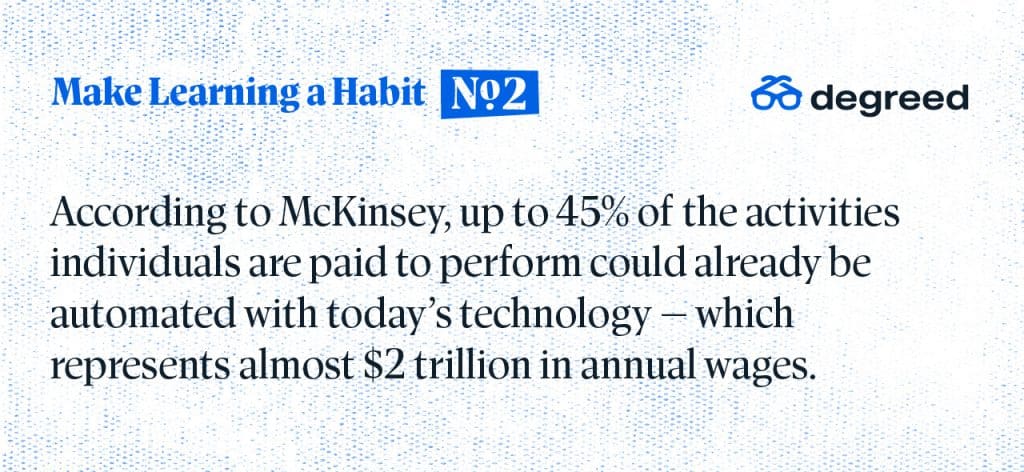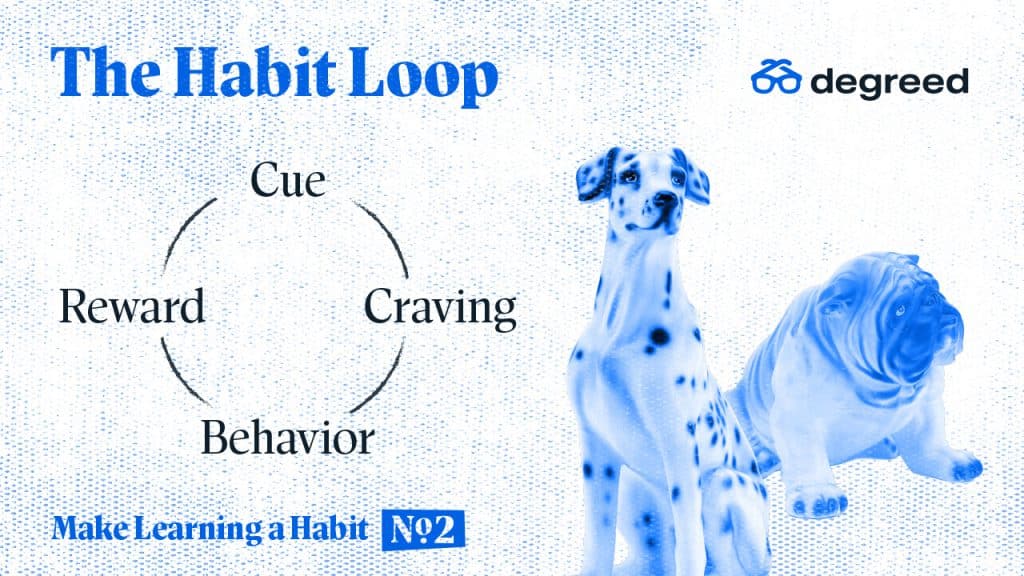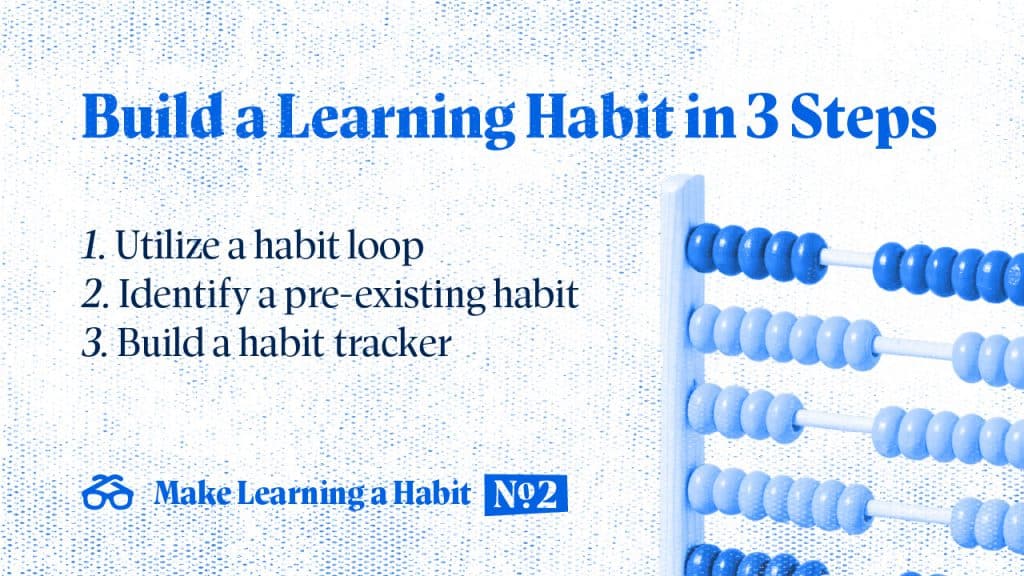There’s no doubt about it. You’re going to need new skills to be successful in the future workplace. According to the World Economic Forum, over half of all workers will need reskilling within the next three years. And, while it may seem like the future is far off, in many ways, it’s already here.
Examples of automation and artificial intelligence already exist in our daily lives. Maybe it’s when Alexa reads the news as you get ready for work or Google Autocomplete assisting with your emails. Or perhaps you have interacted with a customer service chatbot.
What does this mean for our work lives? According to McKinsey, up to about 45% of the activities individuals are paid to perform could already be automated with today’s technology — these activities represent almost $2 trillion in annual wages. This means you could potentially already be automating your rote tasks, allowing yourself more time to use skills like emotional intelligence, problem-solving, and creative and critical thinking.

Becoming a Creature of Habit
What do these numbers mean when applied to your job? The skills you use today are likely different from those that were required even a year ago. Technology is just one of the drivers of change; add increasing globalization, inter-connectedness, and demographic shifts to the workplace, and these changes will bring with them new skill requirements. To ensure we’re equipped for future jobs, we must become continuous learners, constantly updating our skills and abilities to stay ahead of transformation.
To help make continuous learning a regular part of your day, start by creating a learning habit. When we establish a habit, we make that behavior automatic, which will increase the chances of completing that activity each day. How many times have you set out to exercise more or floss your teeth and failed? Until these activities become habits, it’s hard to adopt a new behavior consistently. The good news is that our lives are full of habits, both good and bad. Our brains like habits because they allow us to conserve energy by using less conscious thought.
Three Steps to Creating a Learning Habit
Researchers estimate that between 40-50% of our daily activities are habitual, from brushing our teeth to ordering lunch or having an afternoon snack. Habits can be powerful allies in achieving our goals if we know how to leverage them — and we’re here to teach you how to do just that.
Step 1: Utilize the Habit Loop
Understanding the habit loop is the key to the creation of a new habit. It starts with a cue, followed by a craving for a reward. This tells your brain to perform the behavior or habit. When you have a reward as part of your habit loop, your brain will begin to crave that activity. To help you better visualize this, think about the process of training a puppy. Offering a treat to a puppy is a guaranteed way to attain his undivided attention. When a puppy sits and consequently receives a treat, he begins to connect the two out of habit. Eventually, the puppy will begin to sit, even when you have no treat to offer (most of the time). This is an example of watching the habit loop in action.

As we establish our learning habit, it’s important to give ourselves a reward. This could be as simple as a piece of chocolate or taking a short break to chat with a coworker. How you reward yourself isn’t important, just make sure that you take the time for positive reinforcement, whatever that means to you. Once your habit is well established you’ll no longer need the treat; the learning will become the reward.
Step 2: Identify a Pre-Existing Habit
Another trick is to embed your learning habit in another habitual behavior. For example, maybe you start your day with a cup of coffee while you check your email. Instead of checking email, take 10 minutes to learn. It can be as simple as reading an article — and don’t limit yourself to content that’s work-related. In fact, I’d recommend that you start by exploring new topics that you enjoy learning about in your personal life, as this will be more fun.
In learning each day, you’ll provide your brain with a positive experience, which will further strengthen your learning habits. You may even find a connection to your work that you hadn’t anticipated. For example, reading fiction increases your empathy, which is an important element of emotional intelligence.
Now, back to that cup of coffee. We all know how strong a coffee habit is; if you make that coffee your trigger, you’re using your existing habit to create a new habit.

Step 3: Build a Habit Tracker
Here’s our last tip for successful habit creation: use a habit tracker. For those of us who are goal-oriented, seeing our progress is an effective tool and a great way to hold ourselves accountable. Here’s a link to one we created for you. And, don’t forget to track your learning in Degreed using the Degreed Button. It’s a great way to create a transcript to share with your manager in your next one-on-one or performance review. And demonstrating your initiative for upskilling to a manager can lead to a reward larger than chocolate or coffee.
Want To Learn More?
Contact a Degreed representative to request a demo today.
Are you a Degreed user? You can follow the Learning Habit Pathway (US) (EU) so you can indulge your curiosity and get started developing new learning habits today.
Download our latest research report How the Workforce Learns to discover how you can create a positive learning experience.

